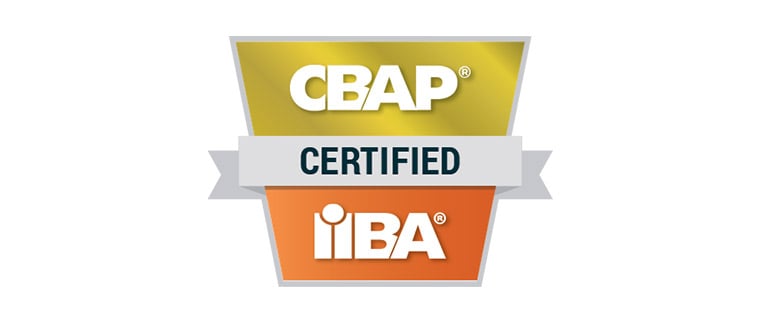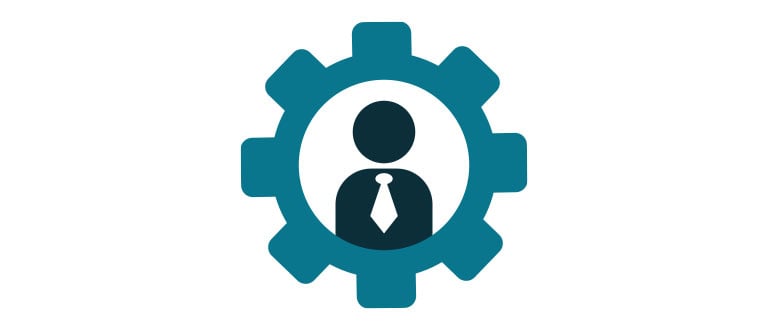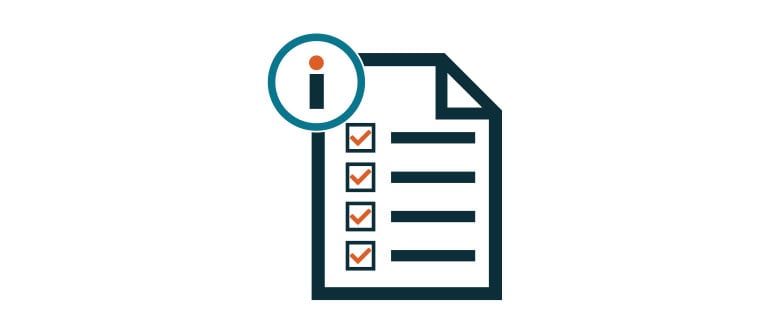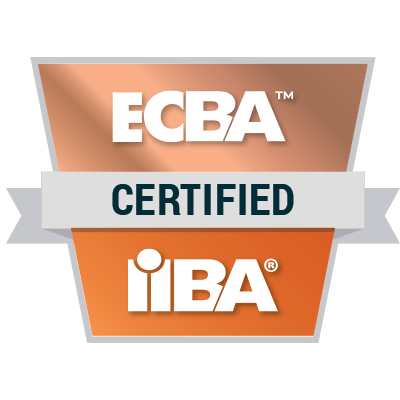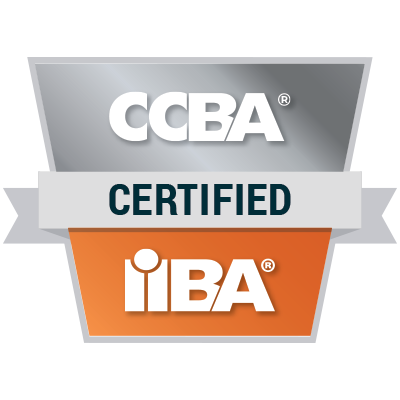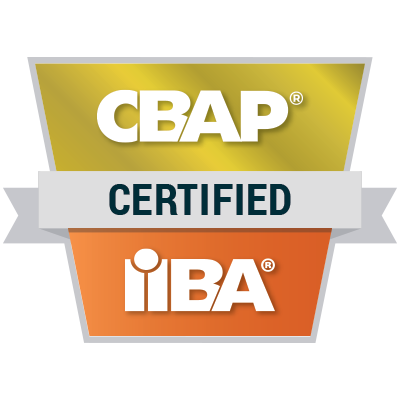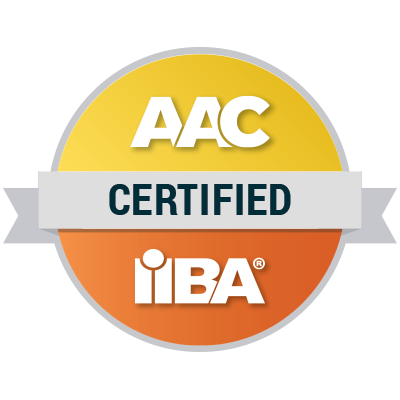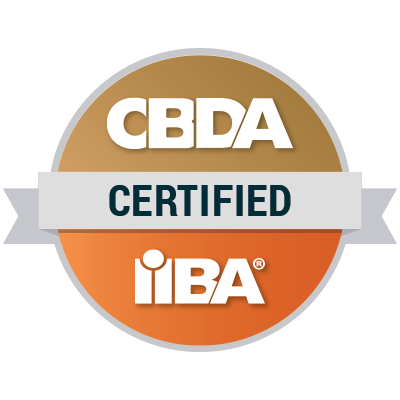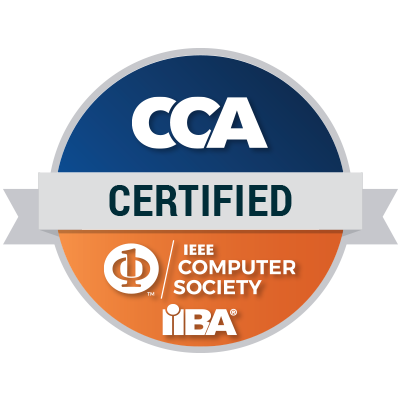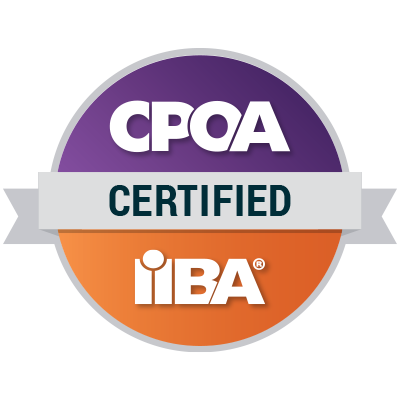Certified Business Analysis Professional (CBAP®)
NOW AVAILABLE - CBAP® Online
Take the CBAP Exam Online.
The Certified Business Analysis Professional™ (CBAP ®) designation is a professional certification for individuals with extensive business analysis (BA) experience. CBAP® recipients are the leading, senior members of the BA community.
What are the benefits of obtaining the CBAP Certification?

It demonstrates you have the knowledge, competencies and experience as a highly effective business analysis professional.

It allows you to stand out to employers and peers by showcasing your dedication to your career and the profession of business analysis.

CBAP certified professionals have higher compensation, earn up to 13% more being CBAP certified.
Where to Get Started when Becoming a CBAP®?
What do I Need to Become a CBAP®?
CBAP® Eligibility
To earn the CBAP® designation, candidates must:
- Complete a minimum of 7,500 hours of Business Analysis Work experience in the last 10 years
- Within this experience, a minimum of 900 hours completed in 4 of the 6 BABOK® Guide Knowledge Areas, for a total of at least 3,600 of the required 7,500 total
- Complete a minimum of 35 hours of Professional development in the last 4 years
- Provide two references
- Agree to Code of Conduct
- Agree to Terms and Conditions
- Pass the exam
Who is a CBAP®?
CBAP® Competencies
Is CBAP® right for you? The CBAP® certification is for:
- Individuals with significant experience in business analysis
- Individuals with a CCBA™ designation
- Product Managers
- Non-BA consultants
- Trainers
- Hybrid Business Analysis professionals, including: Project Manager, Testers, Quality Assurance (QA) professionals, Change/Transformation Managers, and Designers
CBAP® Online!
CBAP®, remote online proctoring is now available! This new option provides flexibility to take the exam online anywhere in the world. Test centre option is also still available, the choice is yours!

Test Your Knowledge
CBAP® Exam Sample Questions and Exam Blueprint
The CBAP® exam consists of 120 multiple choice questions and must be completed within 3.5 hours. Formulated from the BABOK® Guide, exam questions are both scenario and case study-based.
CBAP® Exam Information
This is a computer-based exam. The CBAP® exam can be taken online via proctor format or at a PSI test center. To be admitted to the exam and more details on preparation for this exam, please review our exam information guidelines.
Taking Flight with Professional Resources
Develop Your Business Analysis Career
Challenge Your Business Analysis Knowledge
Business Analysis Resources
Business Analysis Specialization
Business analysis professionals come from many different backgrounds and fulfill different needs to deliver the best business outcome for their organization. Find the resources you need for best practices and specializations relevant to business analysis in today’s transformative world.
Highlight Your Expertise
The Certified Business Analysis Professional™ (CBAP®) offers members of the BA community a variety of benefits, including:
- Demonstrated senior knowledge and professional competence
- Marketability, employability and earning potential
- Success and path to leadership
CBAP recognizes your expertise in multiple business domains and your ability to tackle more complex projects, work with stakeholders to define and manage their business requirements, drive business processes, lead the BA effort, and identify opportunities to achieve better business results.
The IIBA® Annual Business Analysis Salary Survey reports that the average salary of respondents with CBAP® certification holders is 13% higher on average in earnings in comparison to non-certification holders.
Introducing Certification Digital Badges
Show the World You Mean Business
IIBA is pleased to announce we have introduced digital badges as a way to share and validate business analysis certification achievements.
To understand performance expectations for the CBAP® designation, click on the Exam Blueprint, Sample Questions and the links for each Knowledge Area:
CBAP Exam Blueprint
|
Business analysis planning and monitoring |
14% |
|
Elicitation and collaboration |
12% |
|
Requirements life cycle management |
15% |
|
Strategy analysis |
15% |
|
Requirements analysis and design definition |
30% |
|
Solution evaluation |
14% |
CBAP Exam Sample Questions
A. Future strengths with current threats
B. Future threats with future strengths
C. Current strengths with future threats
D. Current strengths with current threats
Answer = C
Strengths /Opportunities Strategies
How can the group’s strength be used to exploit potential opportunities?
SO strategies are fairly straightforward to implement.
Strengths / Threats Strategies
How can the group use its strengths to ward off potential threats?
Can the threats be turned into opportunities?
Weaknesses / Opportunities Strategies
Can the group use an opportunity to eliminate or mitigate a weakness?
Does the opportunity warrant the development of new capabilities?
Weaknesses / Threats Strategies
Can the group restructure itself to avoid the threat?
Should the group consider getting out of this market?
WT strategies involve worst-case scenarios.
A. The process flow for entering an order is bi-directional
B. The systems interface for exchanging order details is unidirectional
C. The end-to-end test scenario is initiated by entering orders from a remote system
D. The use case for reporting order activity is an extension of the use case for entering an order
Answer = C
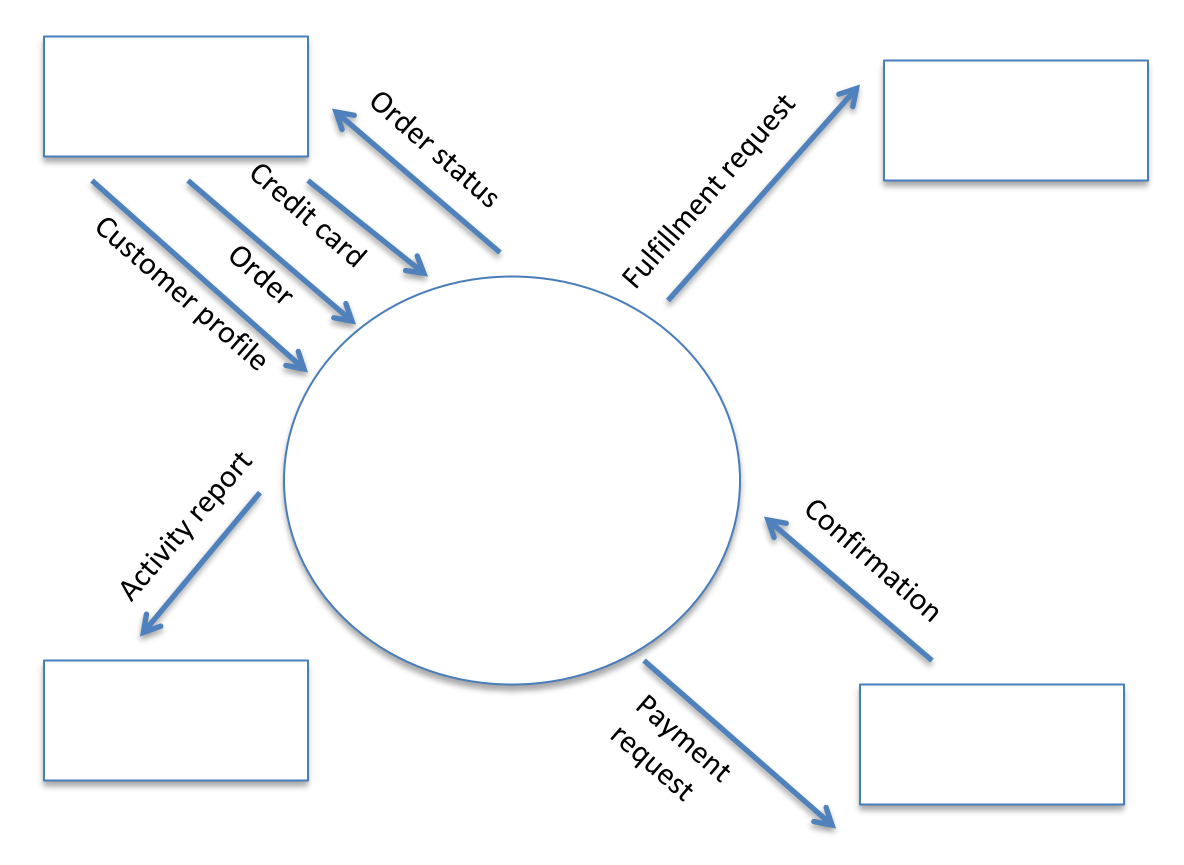
A. Use Case 4 expresses common behavior across several use cases
B. Use Case 1 occurs before Use Case 3
C. Use Case 2 adds unique behavior across several use cases
D. Use Case 3 occurs before Use Case 4
Answer = A
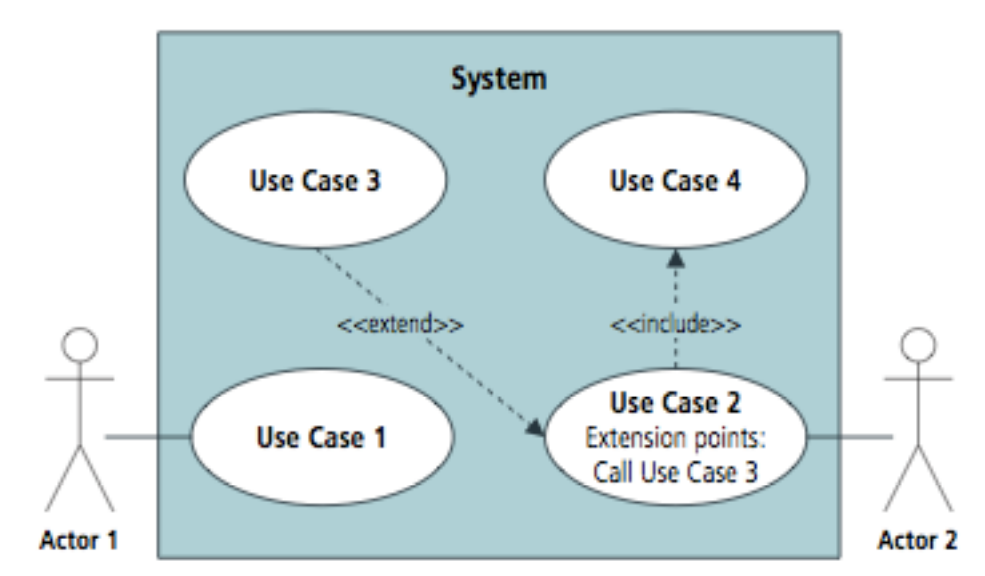
A. Associate actors with use cases
B. Separate processes into swim lanes
C. Create foreign keys for entity relationships
D. Elaborate input and output for data transformations
Answer = D
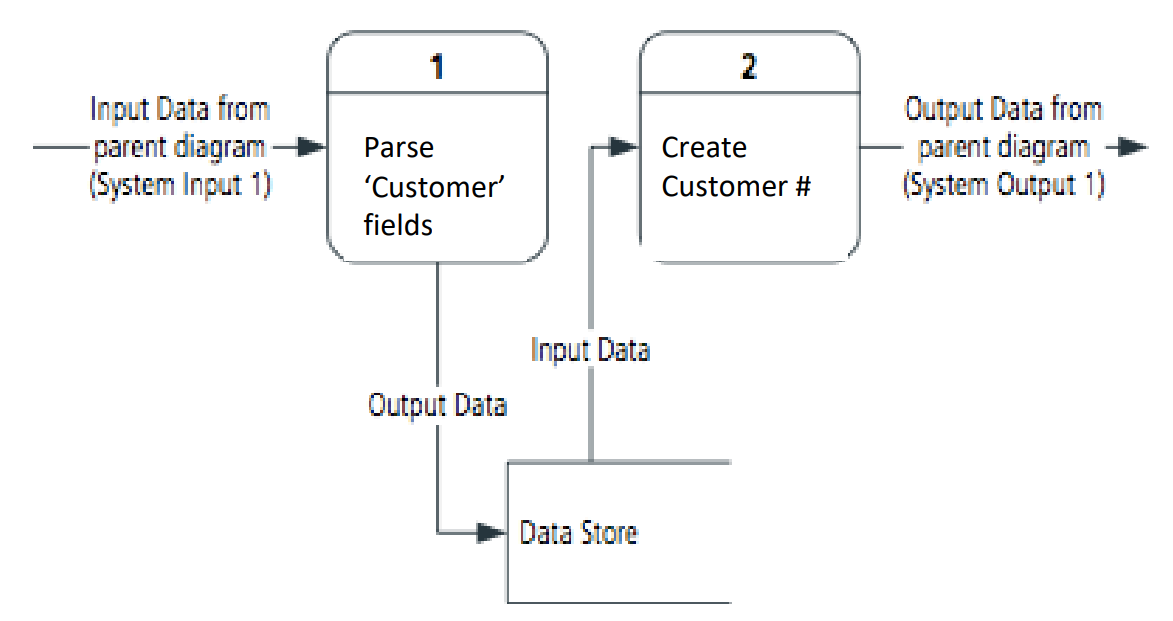
A. The vice president's high level of influence will cause the BA to leverage the organizational modelling technique.
B. The vice president's decision making authority will cause the BA to develop a new stakeholder engagement approach.
C. The vice president's negative attitude towards the project will cause the BA to leverage the risks analysis and management technique.
D. The vice president's disagreement with the project's objectives will cause the BA to leverage the stakeholder list, map, or personas technique.
Answer = C
A. Create a RACI Matrix
B. Monitor stakeholder engagement
C. Assign stakeholders specific tasks
D. Provide adequate time for group discussions
Answer = A
A. Communication plans
B. Performance objectives
C. Solution scope
D. Traceability repository
Answer = D
A. Document the current solution's existing functionality
B. Develop the performance measures for the new solution
C. Create a wish list of desired performance functionality
D. Review the features of commercial off-the-shelf products
Answer = A
A. When the solution is designed
B. When the solution is fully implemented
C. When the elicitation activities are complete
D. When the solution is in use in some form
Answer = D
